2018 Sea-Doo Spark vs. Yamaha EX: By the Numbers
Both 2018 Sea-Doo Spark and Yamaha EX offer consumers an affordable way to enter the PWC market. Let’s see how they compare by the numbers.
The whole reason we ride personal watercraft is to enjoy the fun and exhilaration of speeding across the open water with a level of control and connection not attainable any other way. For some, however, that thrill seemed unreachable, as they sat on the shore and watched, thinking that the cost of a personal watercraft was too far out of reach. Two manufacturers have done something about that, producing machines that are much easier on the budget, while still offering performance and plenty of fun. Sea-Doo made waves with its Spark series and Yamaha is now jumping in with the highly affordable EX WaveRunner. Having fun for less money sounds good to us, too.
| 2018 Sea-Doo Spark | 2018 Yamaha EX | |
|---|---|---|
| Engine | 900cc three-cylinder | 1049cc three-cylinder |
| Price | $6,499 | $6,699 |
| Horsepower | 90 | 100 |
| Seating Capacity | 3 | 3 |
| Length x Width x Height | 120 x 46 x 41″ | 123 x 43 x 45″ |
| Weight | 421 lbs | 577 lbs |
| Fuel Capacity | 7.9 gal. | 13.2 gal. |
| Storage Capacity | 7.84 gal. | 7.7 gal. |
Powering up
The 2018 Sea-Doo Spark runs BRP’s Rotax 900 HO ACE engine that produces 90 horsepower. There is a non-HO version of the engine in the 2-up Spark that produces a tamer 60 horses. This is a marine version of the same 900cc three-cylinder ACE (Advanced Combustion Efficiency) motor BRP uses in its Can-Am Maverick X3 UTVs.
Yamaha has a strong history of performance with marine engines and the award-winning TR-1 engine in the EX lives up to that reputation. The 100-horsepower 1,049cc marine three-cylinder motor packs a lot of punch in a compact, lightweight platform. It powers a 144mm high-pressure pump.
The Yamaha boasts the bigger fuel tank with a 13.2-gallon capacity compared to the Spark’s 7.9-gallon capacity. This gives the Yamaha a range of 92 miles while running at an average speed of 40 miles per hour. The Spark claims a 2.4 gallons per hour fuel consumption rate. It uses Sea-Doo’s iTC intelligent Throttle Control system. This gives you a Touring more for better fuel economy, or a Sport mode with quicker response and faster access to the horsepower at a higher rate of consumption. Either one is going to give you hours of fun on the water and will go plenty fast from point A to point B.
The Spark uses a closed-loop cooling system that prevents saltwater and debris from entering the cooling system. This does require additional maintenance steps. Yamaha uses a standard open-loop system that, while it does open more opportunities for particulates in the cooling system, it is relatively maintenance free. Both machines are designed to run on regular 87-octane pump fuel.
Shipping and Handling
The hull of the 2018 Sea-Doo Spark is made from BRP’s Polytec material. Polytec is a Polypropylene-based material with a long-strand fiberglass reinforcement. This makes the Spark very lightweight with a 405-pound dry weight for the 3-up 90hp model. It also preserves the finish as it is molded into the material.
The 2018 Yamaha EX is built on a sheet-molded compound fiberglass material. For those unfamiliar with the process, interweaving sheets of fiberglass and composite are compressed under extreme pressure into a very solid shell. This makes for an extremely durable and rigid hull, but at a higher weight. The EX has a dry weight of 577 pounds, but has 7.7 gallons of built-in storage. The WaveRunner also seats up to three.
The 2018 Sea-Doo Spark comes in three color combinations; Licorice Mango, Vanilla/Blueberry, and Pineapple/Candy Blue. It retails for $6,499 for the 90hp, 3-up model. The 60hp, 2-up carries and MSRP starting at $5,399. You can find out more at here or at your local Sea-Doo dealership.
Yamaha’s WaveRunner EX comes in just one color – Yamaha Pure White with Blue. It has an MSRP of $6,699. Learn more about the EX here or by going to your local Yamaha WaveRunner dealer.
Get PersonalWatercraft.com in your Inbox!
Like PersonalWatercraft.com on Facebook
Related Stories
Comments
Most Popular

2025 Yamaha JetBlaster PRO 2-Up Review

Remembering the Sea-Doo XP

2024 Kawasaki Jet Ski STX 160X Review

Whatever Happened to the Wetbike?

2025 Yamaha JetBlaster Review




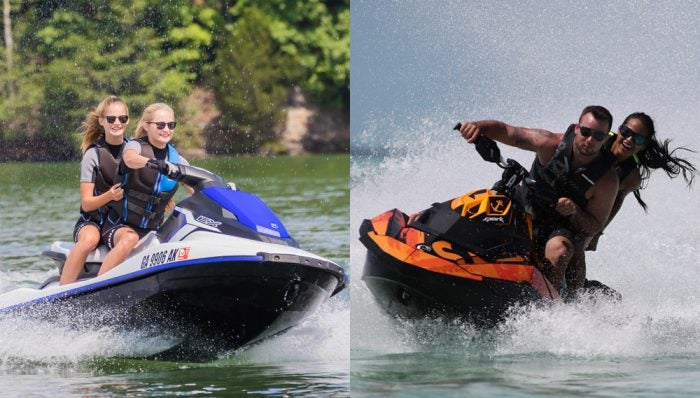
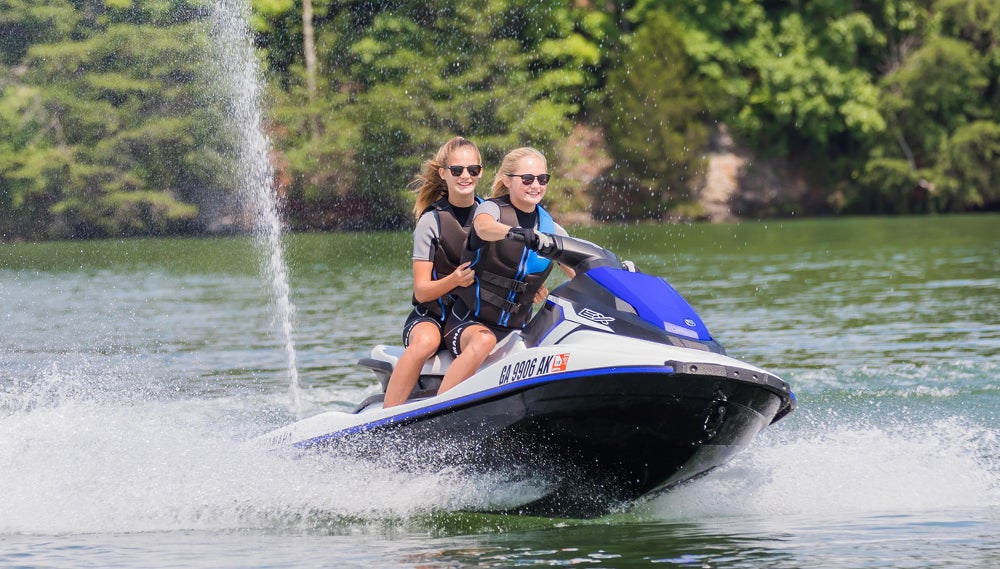
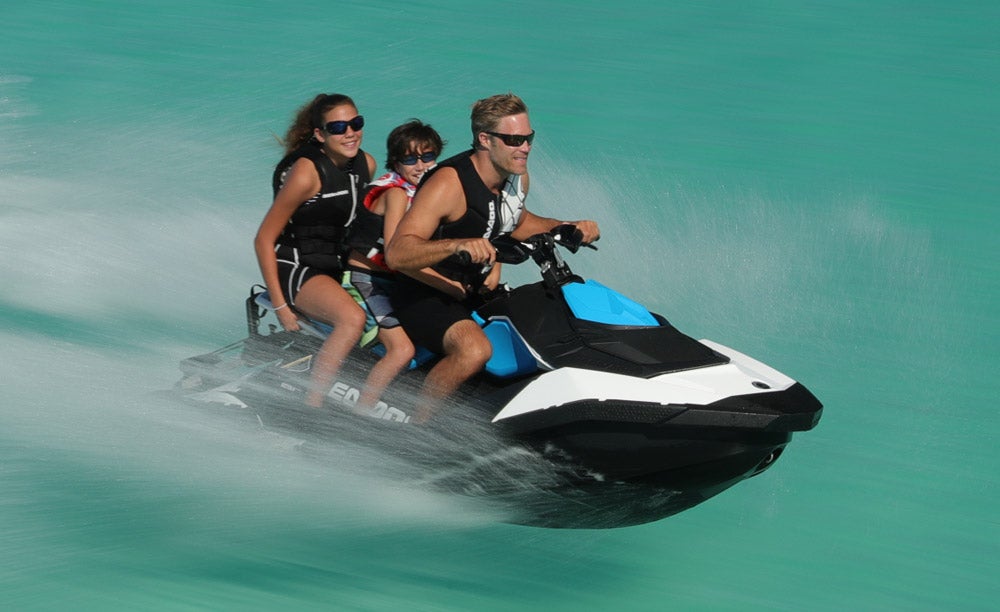
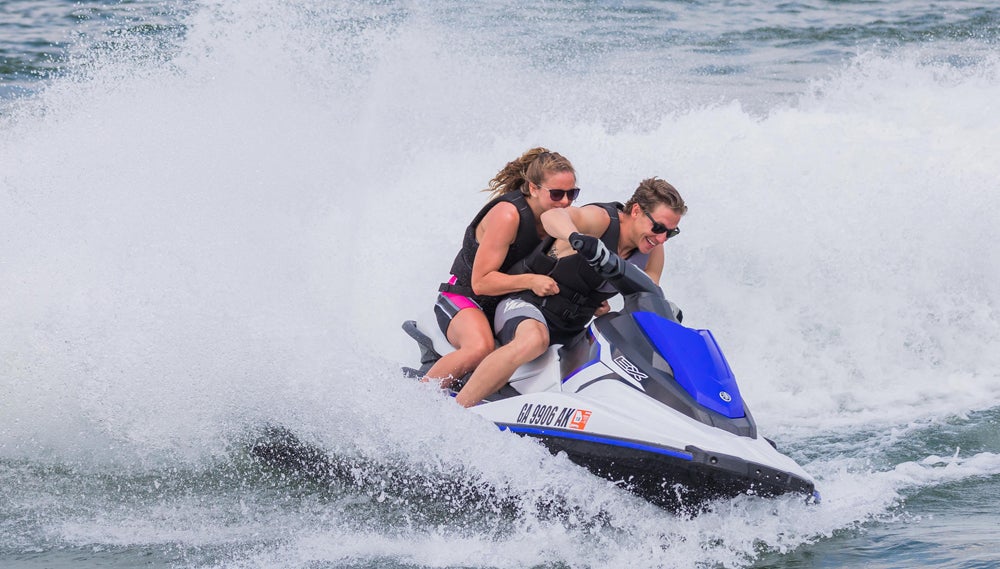
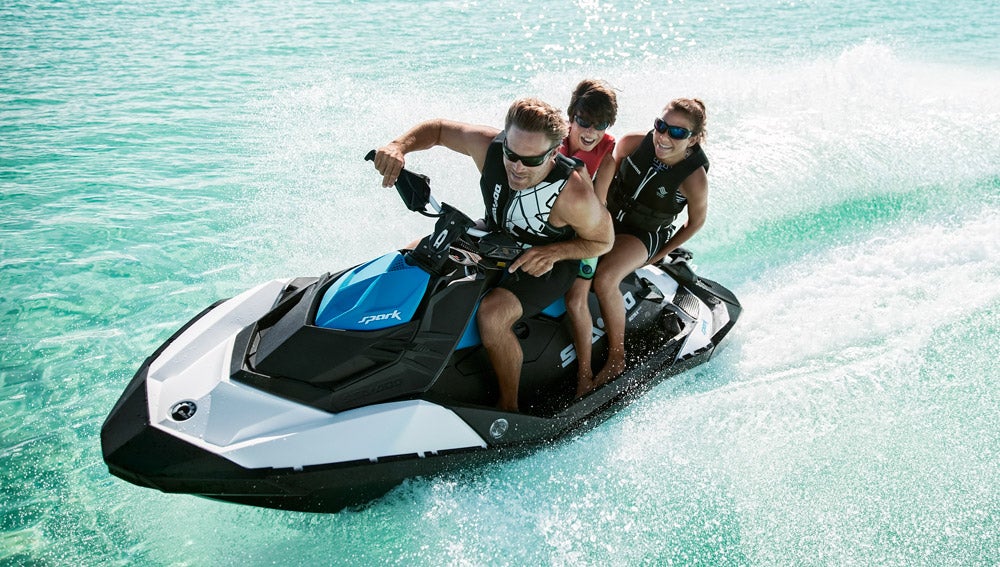


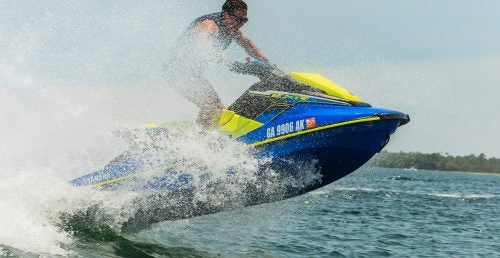






 Your Privacy Choices
Your Privacy Choices